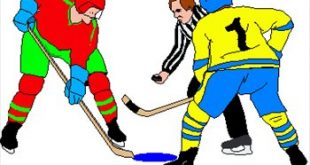Researchers at Michigan Tech are working with Army specialists to study how military vehicles perform on different terrains.
 “Michigan Tech has been a long standing partner of the US Army. In fact, the Keweenaw Research Center used to be part of the Army. It used to be a test center for the Army and it was turned over to the university decades ago and it’s continued that strong partnership particularly in off road mobility and unstructured environments,” said Paul Rogers of TARDEC.
“Michigan Tech has been a long standing partner of the US Army. In fact, the Keweenaw Research Center used to be part of the Army. It used to be a test center for the Army and it was turned over to the university decades ago and it’s continued that strong partnership particularly in off road mobility and unstructured environments,” said Paul Rogers of TARDEC.
Representatives from many countries came together yesterday to take an interest in dirt. “This is a collaboration with a lot of our NATO Allies, and a lot of our industry and academic partners, to better understand mobility of our ground vehicles primarily in off road environments,” said Rogers.
The objective is to build a better ground vehicle, giving the men and women who operate them better odds of returning home safely.
 Rogers said, “What we’ve really developed over the last several decades, as everyone knows, is very high performing computers and the ability to accurately model the physics of vehicle systems and soil and the interaction between vehicle and soil. Now we can do predictive analysis on soils that we have not tested on. This testing is paramount to underwrite and be a foundational piece for that analytics and that research.”
Rogers said, “What we’ve really developed over the last several decades, as everyone knows, is very high performing computers and the ability to accurately model the physics of vehicle systems and soil and the interaction between vehicle and soil. Now we can do predictive analysis on soils that we have not tested on. This testing is paramount to underwrite and be a foundational piece for that analytics and that research.”
By scrutinizing every detail of how those vehicles perform in different terrains, researchers and engineers will have a better understanding of how to achieve that goal.
 Keweenaw Research Center Executive Director Jay Meldrum said, “We’ve digitized every pebble in the proving ground here into a database and they can have that database so they can drive that vehicle through the terrain in the computer and try to predict the mobility as we drive that vehicle going through that rough terrain.”
Keweenaw Research Center Executive Director Jay Meldrum said, “We’ve digitized every pebble in the proving ground here into a database and they can have that database so they can drive that vehicle through the terrain in the computer and try to predict the mobility as we drive that vehicle going through that rough terrain.”
As combat zones are often unchartered terrain, yesterday’s testing tracks offered some insight as to the limits of mobility and demonstrated many differences from one vehicle to the next.
 Meldrum said, “Tracked vehicles, wheeled vehicles, small vehicles, large vehicles, armored vehicles, you name it. We’ve put together a variety of courses that range from 30 percent side slope to RMS courses. RMS 1- your car would have a hard time going over, RMS 5- a military vehicle would have a hard time going over.”
Meldrum said, “Tracked vehicles, wheeled vehicles, small vehicles, large vehicles, armored vehicles, you name it. We’ve put together a variety of courses that range from 30 percent side slope to RMS courses. RMS 1- your car would have a hard time going over, RMS 5- a military vehicle would have a hard time going over.”
Yesterday concluded the third and final day of presentations by TARDEC, and The Next-Generation NATO Reference Mobility Mode, with several demonstrations taking place throughout the day.
“The environment up here at Michigan Tech is perfect for what we’re interested in. It reflects a lot of the European climate and gives us the four seasons to better understand mobility for our ground vehicles.”
 Keweenaw Report Your Source for Local News and Sports
Keweenaw Report Your Source for Local News and Sports





